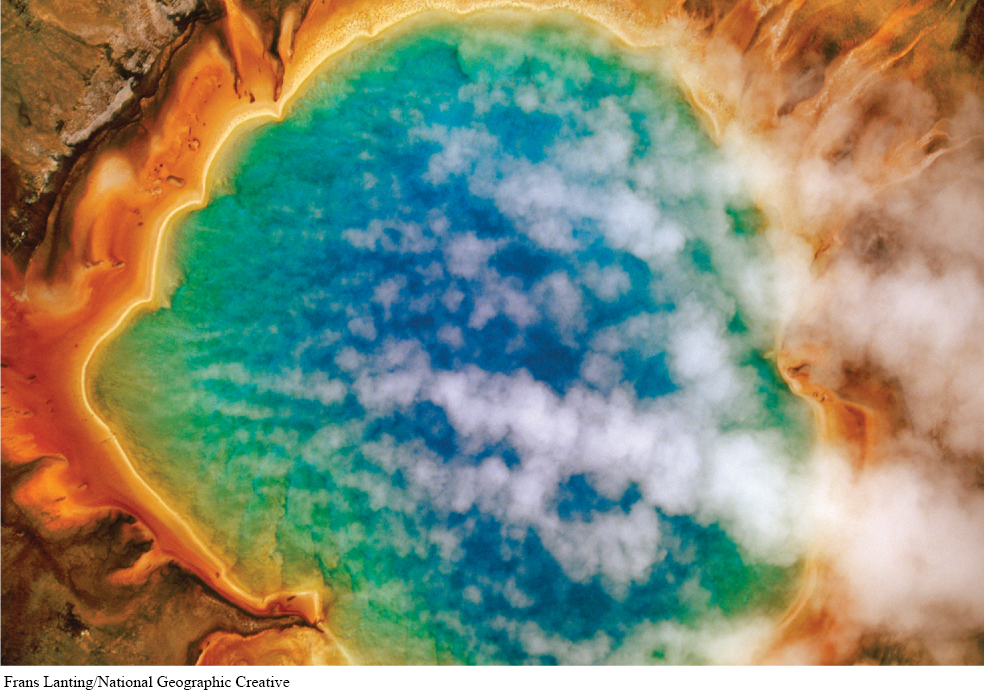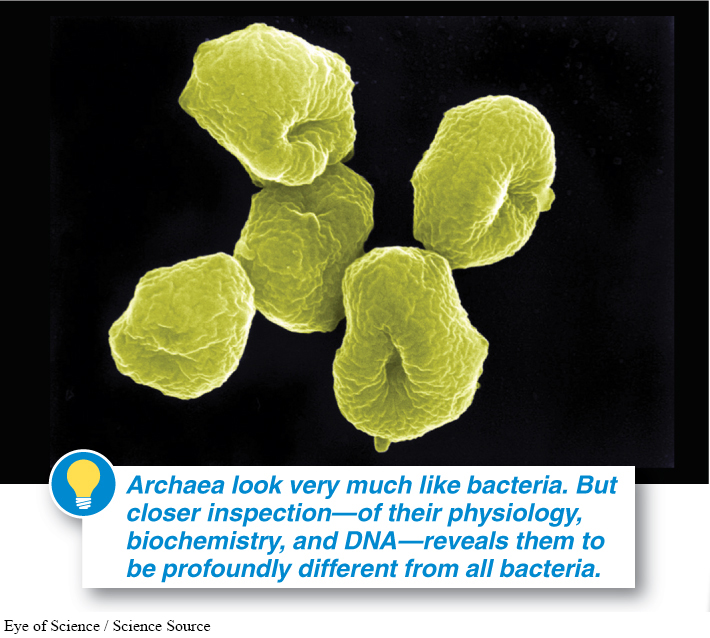
When you look at the photograph of archaea in FIGURE 13-16, you may find it hard to believe that they are even a little bit different from bacteria, let alone profoundly different. Both live as single cells or colonies of cells, both are surrounded by a plasma membrane, and both have species with flagella that twirl like propellers. In fact, until the 1970s, biologists considered the archaea to be bacteria. Only then did comparisons of DNA reveal that archaea are as different from bacteria as humans are.

Those studies of archaeal nucleotide sequences stimulated other comparisons, which identified additional differences among bacteria, archaea, and eukarya. For example, the chemical compositions of the plasma membranes, cell walls, and flagella of archaea are qualitatively different from those of bacteria. And beyond the large DNA sequence differences and the differences in plasma membranes, cell walls, and flagella, a third difference reflects the phylogenetic positioning of archaea between bacteria and eukarya on the tree of life (see Figure 13-1): eukaryotes have a distinct cell nucleus that is separated from the cytoplasm by a nuclear membrane, whereas bacteria and archaea have neither a nucleus nor a nuclear membrane. The presence of a nucleus protects the chromosomes of a eukaryotic cell and allows the cell to control what molecules interact with its DNA.
TAKE-HOME MESSAGE 13.11
Archaea possess characteristics that place them between bacteria and eukaryotes on the tree of life. Archaea and bacteria may look similar, but they have significant differences in their DNA sequences, as well as in their plasma membranes, cell walls, and flagella. Furthermore, neither archaea nor bacteria resemble eukarya in one key way: only eukarya have a distinct cell nucleus and nuclear membrane.
How are archaea similar to bacteria? How are they different?
Both bacteria and archaea are prokaryotes, lacking a nuclear membrane and other organelles, and have superficially similar shapes. However, there are fundamental differences in the chemical compositions of the plasma membranes, cell walls, flagella, and other structures between bacteria and archaea.
551